Discovering Digital Fax Solutions Beyond eFax
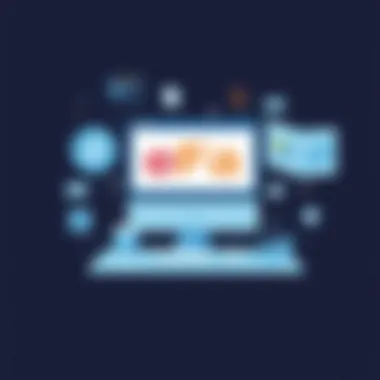
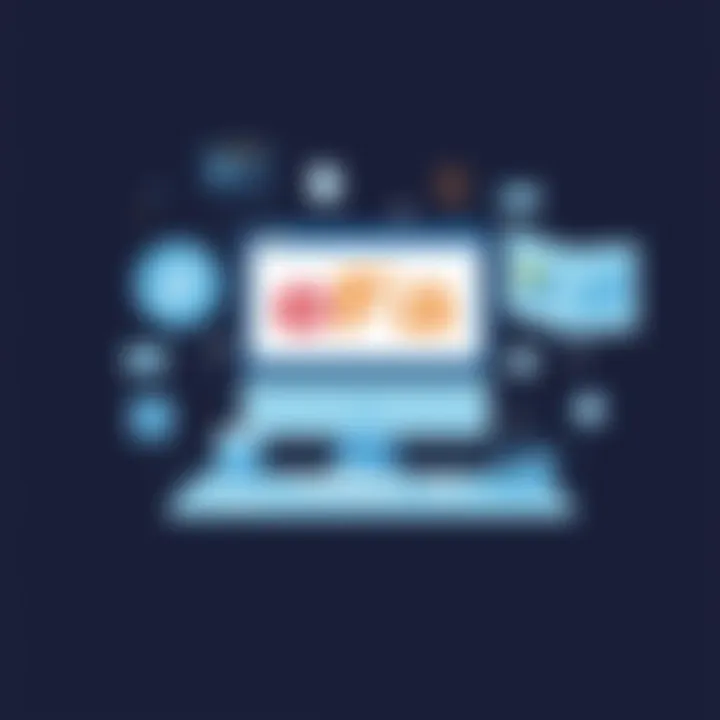
Intro
In the rapid evolution of communication technologies, traditional fax systems have become a relic of the past for many businesses. The shift towards digital solutions is not just about keeping up with the times; it is about enhancing efficiency, security, and user experience. As companies look to modernize their document transmission processes, understanding alternatives to eFax becomes paramount. This article seeks to shed light on various software solutions that offer more robust features, superior security protocols, and an overall enhanced user experience than conventional eFax services.
For professionals in IT and software sectors, these alternatives can significantly improve operational workflows. By exploring these options, businesses can make well-informed decisions that best suit their requirements while adapting to the ever-changing landscape of digital communication. With a focus on functionality, security, and user experience, the exploration of modern fax alternatives provides insightful perspectives crucial for both small startups and large enterprises alike.
Prelude to the Evolution of Fax Solutions
The world of document transmission has undergone a remarkable transformation since the invention of the facsimile. Once a staple in offices, traditional fax machines have been largely sidelined by advancements in technology. In this context, the evolution of fax solutions is not just a matter of convenience; it is essential for businesses aiming for efficiency and security. Understanding this evolution helps stakeholders appreciate the context and relevance of modern alternatives, particularly as the demand for swift and secure communication has never been more acute.
To grasp the sheer importance of this transformation, it’s vital to consider several aspects:
- Technological Progress: The move from analog to digital has opened doors to new levels of efficiency. Cloud technology has made it possible for documents to be sent and received in mere seconds.
- Changing Business Needs: Companies today, whether small startups or large corporations, require flexible and user-friendly solutions that can integrate seamlessly into their existing frameworks. Traditional faxes simply can’t keep pace with this demand.
- Security Concerns: The more we digitize our processes, the more we become acutely aware of data security. Modern alternatives to traditional faxing come equipped with encryption and secure transmission protocols that far exceed the safety standards of old.
This evolution isn’t just a shift in tools; it reflects a larger trend towards more holistic, integrated communication systems. The advent of eFax marked a significant step in this journey, but now it’s time to explore what else is out there. Innovations such as cloud-based document solutions and secure sharing services offer compelling advantages that extend beyond the limitations of eFax.
The benefits of acknowledging this evolution are twofold: it allows businesses to better assess their current communication needs and helps them make informed choices about what tools will serve them best as they grow.
In summation, understanding the evolution of fax solutions isn’t just about tracing its history; it’s a lens through which we can view the current landscape of digital communications, and the exciting alternatives that stand ready to replace the outdated models of yesteryear. As the saying goes, "adapt or get left behind," and in the fast-paced world of document transmission, this couldn’t ring truer.
Understanding eFax: A Brief Overview
In the realm of digital communication, the transition from traditional methods to modern solutions holds significant implications. eFax, or electronic faxing, emerged as a response to the limitations that plagued conventional fax processes. Understanding this concept is pivotal as organizations navigate today’s fast-paced digital landscape. eFax is not just a digital replica of traditional faxing; it has evolved to improve efficiency and reduce overhead costs associated with print and paper.
When considering transparent document transmission, knowing how eFax operates lays the groundwork for evaluating the alternatives that have surfaced. The convenience of sending faxes via email or online platforms negates the necessity of dedicated fax machines that often result in cumbersome workflows. Moreover, the potential for rapid delivery and easier tracking of documents enhances organizational productivity—a key aspect businesses prioritize in the digital age.
The Concept of eFax
At its core, eFax allows users to send and receive faxes electronically. This process often involves a dedicated email address or a web interface that users can access through the internet. Essentially, a document is scanned, converted into a digital format, and then transmitted over the internet, arriving at the recipient’s fax machine, email inbox, or even an online account.
Key Features of eFax Include:
- User-Friendly Interface: Most eFax services are designed to streamline the user experience, requiring minimal setup and offering intuitive features.
- Accessibility: Users can send and receive faxes from virtually anywhere, as long as they have internet access.
- Cost Efficiency: With no need for paper, ink, or dedicated phone lines, eFax provides a more economical solution.
- Environmentally Friendly: Reducing paper waste aligns with sustainability goals many companies pursue today.
In short, eFax enhances traditional fax functionalities, allowing for quicker, more efficient document handling. However, while it may shine in convenience and ease of use, potential users should be well-informed about its limitations.
Limitations of eFax Systems
Despite the advances eFax offers, inherent limitations can complicate its deployment within certain business contexts.
Common Limitations Include:
- Security Concerns: While many eFax services claim to encrypt documents during transmission, the lack of regulated standards across providers raises questions on data safety.
- Service Reliability: Dependence on internet connectivity means that service interruptions can hinder fax send and receive capabilities, causing frustration during crucial communications.
- Compatibility Issues: Not all documents and formats may transmit seamlessly, leading to potential miscommunications or loss of important visual details.
- Limited Functionality: Unlike comprehensive document management systems that may incorporate advanced features like automated workflows or collaboration tools, eFax often lacks these capabilities.
In summary, while eFax presents an innovative solution to many traditional faxing issues, it isn’t without its pitfalls. Organizations must weigh both the benefits and limitations as they consider transitioning to more robust, modern alternatives for document transmission.
Identifying the Criteria for Effective Fax Alternatives
The evolution of communication technologies has significantly altered how businesses handle document transmission. Given this shift, understanding the vital criteria for effective fax alternatives can steer professionals towards selecting solutions that boost efficiency, ensure security, and enhance integration within existing workflows. In this section, we will dissect these key elements and demonstrate why each is essential for any organization considering a shift away from traditional eFax methods.
Security Capabilities
When it comes to handling sensitive information, security stands at the forefront. The modern digital landscape poses various risks, and any fax alternative must prioritize security features. Businesses need to ensure that whatever solution they choose can protect data from unauthorized access. For instance, encrypted transmissions safeguard documents during sending, while secured storage options reduce the threat of breaches.
Additionally, implementing multi-layered authentication processes can be crucial. This adds a reliable barrier against unauthorized access and ensures that sensitive documents reach only their intended recipients. As an example, the use of platforms like DocuSign not only allows secure document sharing but also maintains extensive audits and logs, giving users peace of mind about compliance with regulations such as HIPAA or GDPR.
Integration with Existing Systems
Selecting a fax alternative that integrates seamlessly with existing systems is another critical factor. A proper integration ensures that workflow continuity is maintained, which is vital for productivity. People don't want to juggle multiple systems, and a solution that easily merges with existing applications can save time and prevent headaches.
For instance, platforms like Adobe Sign can integrate with major CRM systems, such as Salesforce or HubSpot, which streamlines the process of sending documents directly from those systems. This kind of integration minimizes manual input and reduces errors, allowing businesses to focus on what matters most without unnecessary interruptions. A robust API can also enhance interoperability, making it easier to adapt existing tools or develop custom features that meet specific organizational needs.
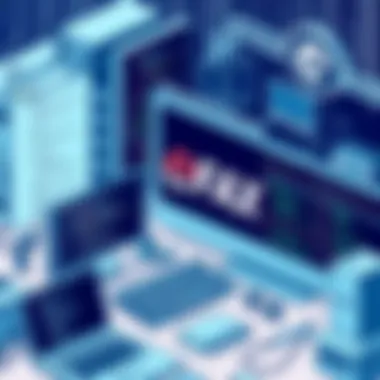
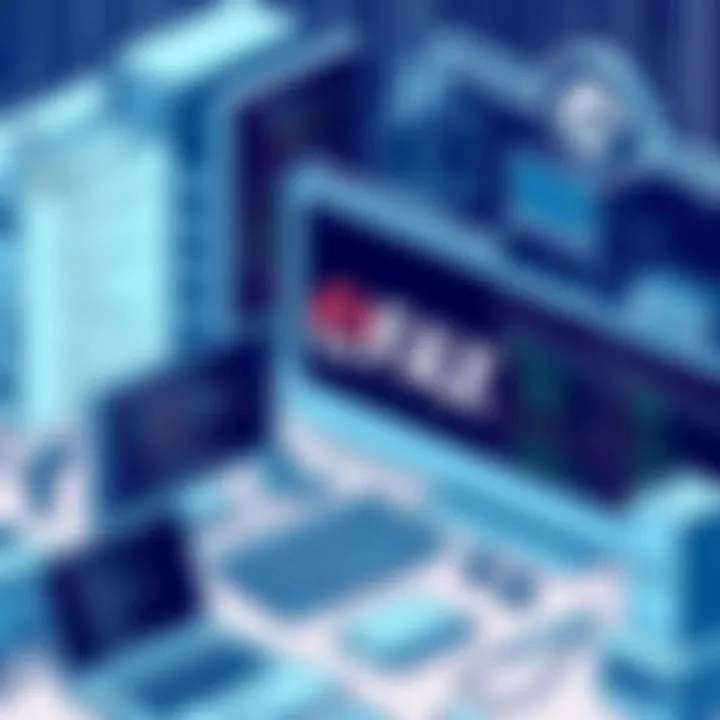
User Experience and Interface Design
User experience is not just a buzzword; it's a necessity. An easy-to-navigate interface can significantly boost employee productivity. With most professionals juggling various tasks, an intuitive design that minimizes the learning curve can make a significant difference.
A clean layout, clear instructions, and responsive customer support are essential. For example, platforms such as HelloSign offer simple interfaces that users have found create a smoother experience during their document transaction processes. Moreover, employing user feedback to enhance interface design can help companies cater their solutions more closely to user preferences. A welcoming user experience leads not only to higher adoption rates but also to better overall job satisfaction, bolstering morale across departments.
"The key to successfully transitioning from traditional faxing to modern solutions is not just in picking a tool, but ensuring it aligns well with your organization's specific requirements."
By carefully evaluating these critical components, organizations can make informed decisions to enhance their document transmission strategies.
Alternatives to eFax: Comprehensive Software Analysis
The shift from traditional eFax to more modern solutions emphasizes a need to analyze alternative software. This section delves into various options that serve as replacements for eFax and highlights their effectiveness in fulfilling today's communication needs.
With advancements in technology, organizations are increasingly seeking alternatives that not only promise efficiency but also provide robust functionality. By examining comprehensive software options, businesses can better assess what suits them while aligning with their unique requirements.
Cloud-Based Document Solutions
Overview of Popular Platforms
Cloud-based document solutions have surged in popularity due to their accessibility and ease of use. Notable platforms like Google Drive, Dropbox, and Adobe Sign are reshaping how documents are managed and shared. These solutions typically allow for seamless uploads and cloud storage, enabling users to access documents from anywhere with an internet connection.
The key characteristic of cloud platforms is their collaboration features, allowing multiple users to edit documents in real-time. This significantly enhances productivity since team members can work together without worrying about multiple versions of a document cluttering their workspace. Many platforms incorporate intuitive interfaces making them user-friendly, catering to tech-savvy individuals and novices alike. However, one downside can be limited offline access, which may create challenges during connectivity issues.
Key Advantages Over eFax
When comparing cloud solutions with eFax, there are several key advantages to consider. Primarily, the speed of document transmission drastically improves, as files can be shared instantly with just a few clicks. Additionally, cloud services eliminate the need for bulky fax machines, reducing both operational and maintenance costs.
Many modern platforms also put a strong emphasis on security features, utilizing encryption methods that are generally more advanced than those found in traditional fax systems. This way, sensitive information is better protected from unauthorized access.
Secure Document Sharing Services
Evaluating Security Features
Security is paramount in any document-sharing service. Services like DocuSign and ShareFile are designed with multiple layers of security, including two-factor authentication and end-to-end encryption, ensuring that data remains secure during transit. This key characteristic makes them a wise choice for businesses that handle sensitive information regularly.
These services are particularly beneficial for organizations in regulated industries like healthcare and finance, where compliance with laws such as HIPAA is essential. The trade-off may involve a steeper learning curve or cost based on the specific features offered, but the value of robust security can outweigh these disadvantages.
User Testimonials and Experience
User experiences can provide invaluable insights into how well these services perform. For example, many businesses report that transitioning to a secure sharing service enhanced efficiency and decreased the hassle associated with eFax. In testimonials, users often praise the ease of use and the improved speed of document delivery. A recurring unique feature mentioned is the ability to sign documents digitally, reducing turnaround times getting documents processed.
However, some users note occasional issues with customer support, where response times to queries can lag behind expectations. This inconsistency can create frustration when technical issues arise during critical operations.
Integrated Communication Systems
Benefits of All-in-One Solutions
Integrated communication systems present a cohesive approach to manage various business functions. Platforms like Microsoft Teams and Slack offer tools for instant messaging, video calls, and document sharing, streamlining operations. The key characteristic of these systems lies in their ability to centralize communication, allowing for better collaboration among teams.
Such all-in-one solutions not only reduce the need for separate applications but also foster a more unified team culture since communication becomes more direct. Although the adaptability of these platforms is a major advantage, another consideration is the time required for employees to fully embrace new systems, particularly if they are accustomed to older methods.
Case Studies and Success Metrics
Examining real-life applications of integrated systems can shed light on their effectiveness. Companies that have adopted such solutions often report increased efficiency and productivity. In a case study, a mid-sized firm transitioning from eFax to a fully integrated solution noted a 30% improvement in turnaround times for document approvals.
These unique features not only improve workflow but can also lead to financial savings over time, as companies find they need fewer resources to achieve the same results. The challenge remains, however, in training staff to leverage the platform’s full capabilities seamlessly.
As businesses evaluate these alternatives, it's clear that modern software solutions hold numerous benefits over traditional eFax systems. It becomes critical to consider the specific needs of the organization to choose the most appropriate tool that advances their operational goals.
Cost-Benefit Analysis of Switching from eFax
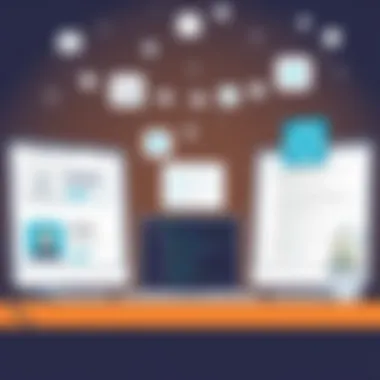
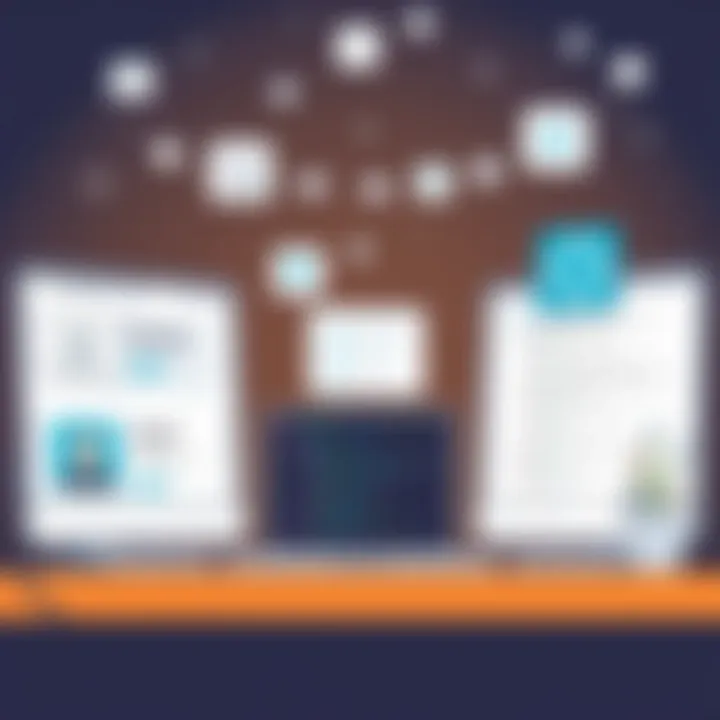
Making the leap from traditional eFax systems to alternative solutions shouldn't be a decision made on a whim. Instead, it's a strategic move that necessitates a clear understanding of the financial implications versus the potential benefits. In this section, we will untangle the complexities of evaluating costs associated with switching from an eFax system in favor of more modern solutions, shedding light on both immediate investment and the long-term savings it promises.
Initial Investment versus Long-term Savings
When considering alternatives to eFax, the initial investment can often raise eyebrows. New technology usually comes with a price tag, and transitioning to systems like cloud-based document solutions or integrated communication systems is no different. To weigh this cost against the potential benefits, businesses should conduct a thorough review of what they stand to gain.
- Upfront Costs: Evaluate expenses related to software purchase, setup fees, and training sessions. This may also include the cost of integrating with existing systems or migrating data.
- Ongoing Expenses: Acknowledge subscription fees and maintenance costs that may surface over time. Often, these alternatives offer tiered pricing based on usage, which might end up being financially favorable for high-volume document transactions.
In contrast, the long-term savings can be quite significant. By opting for newer systems, companies typically reduce their reliance on outdated fax machines and the significant costs associated with paper, ink, and storage. Let's look at the comparison in more detail:
- Operational Efficiency: The time and resources saved with faster digital transmission can be reinvested into core business operations, leading to better outcomes overall.
- Reduction in Paper Usage: Many businesses are moving towards eco-friendly practices. Transitioning away from eFax greatly reduces paper waste, directly impacting both cost and the environment.
- Enhanced Collaboration: New systems often support collaboration tools that allow teams to work more effectively, thus improving productivity and satisfaction.
In the grand scheme, understanding the return on investment (ROI) becomes crucial for any business making the switch.
Assessing ROI for Businesses
Calculating ROI isn't merely about looking at dollar signs. It's about considering qualitative metrics that can have a profound impact on long-term growth and sustainability.
- Enhanced Efficiency: By decreasing the time consumed in document processing and transmission, businesses can allocate that time toward more strategic initiatives. This improved workflow can lead to faster project completions and subsequently higher revenue.
- Customer Satisfaction: Quickly getting documents to clients or stakeholders can enhance customer satisfaction and trust. A business that responds promptly is often perceived as more reliable.
- Scalability: Systems that can grow with an organization are key. Traditional eFax may not have the ability to scale at the same pace as digital alternatives, which can lead to further costs down the road as the business expands.
User Experiences: Comparing Alternatives to eFax
User experience is a cornerstone of any technology solution, especially when it's about replacing traditional systems. In the case of alternatives to eFax, understanding user experiences highlights how these modern solutions meet or exceed the expectations set by old-school faxing methods. When businesses consider switching, grasping the practical insights from real users greatly influences the decision-making process. This section will peel back the layers, showcasing diverse case studies and authentic feedback that underline the growing preference for these alternatives.
Case Studies from Various Industries
Examining case studies provides a textured view of how different sectors benefit from stepping away from eFax. For instance, take healthcare. Hospitals like Greenfield Medical Center adopted a cloud-based document solution, which not only ensured compliance with HIPAA regulations but also cut down on paperwork delays. By implementing a system that integrates directly with electronic health records, they reported a 30% increase in efficiency.
Similarly, in the legal field, firms like Hastings & Co transitioned to secure document sharing services. They noted improved collaboration with clients and other lawyers. Instead of the friction of sending faxes and waiting for confirmation, they could share documents in seconds. Tagging, commenting, and document version control became routine, ultimately leading to significant time savings.
Even retail has shifted. Brands like Trendy Markets have turned to integrated communication systems, streamlining inventory orders and supplier communications. With analytics feature that highlights buying patterns, they can predict trends more accurately.
These examples illustrate a clear trend: as industries embrace these alternatives, they're not just replacing technology; they’re reshaping workflows and boosting productivity.
"Changing to a cloud-based system isn't just a swap; it's reinventing how we think about document handling." — Jenny, healthcare administrator
Real User Feedback
Listening to the voice of users provides unfiltered insights that quantifiable metrics sometimes overlook. Feedback from professionals who have made the switch often reveals nuances that are invaluable for potential adopters. Many users rave about convenience and speed.
For instance, Mike, an operations manager at a construction firm, expressed, "The best part of using a document sharing service is knowing I can send contracts and blueprints anywhere, anytime. I can track who viewed my documents, making follow-ups a breeze."
Conversely, some users highlighted 'teething troubles' during the transition. Kathy, a small business owner, said, "It rubbed me the wrong way when my team faced a learning curve. Training took time, and we had some hiccups. But now that we are accustomed, it’s smooth sailing." This feedback underscores the reality that while challenges exist, they are often temporary.
End
User experiences, defined through rich narratives and quantitative improvements, make it clear that moving away from eFax can offer tangible enhancements. These case studies and real user feedback provide essential knowledge for IT professionals, software experts, and business leaders, paving the way for informed choices in adopting modern document transmission methods.
Challenges and Considerations in Switching Diagnosis
In today’s rapidly evolving digital landscape, organizations face many challenges when switching from traditional fax systems to more modern alternatives. Understanding these challenges is crucial for IT professionals and business leaders, as it can streamline operations, enhance security, and ultimately boost productivity.
Switching to an advanced document transmission solution can seem like a daunting task, laden with risks. However, acknowledging and strategically addressing these challenges can pave the way for a transition that amplifies organizational efficiency. Let's dive into the specifics of the elements involved in this process.
Transitioning from Legacy Systems
Transitioning from legacy systems, like traditional fax machines, is often easier said than done. Companies that have relied on these outdated systems may experience several hurdles, from resistance to change among staff to technical integration issues.
Firstly, staff accustomed to the old ways may feel apprehensive or confused about using new software. To address this, providing thorough training sessions can be invaluable. Change management strategies are also essential—keeping open lines of communication and encouraging feedback helps reduce anxiety around new systems.
The technical side can be equally daunting. Legacy systems might be intertwined with older databases or applications, creating potential compatibility issues with modern alternatives. Before making a switch, a clear assessment of current systems and workflows is imperative. Asking questions like:
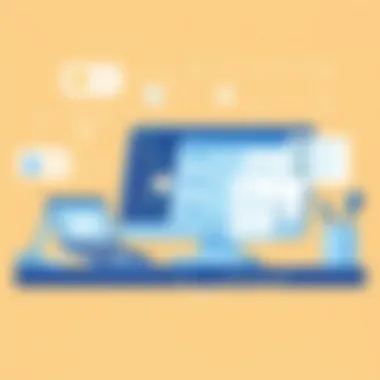
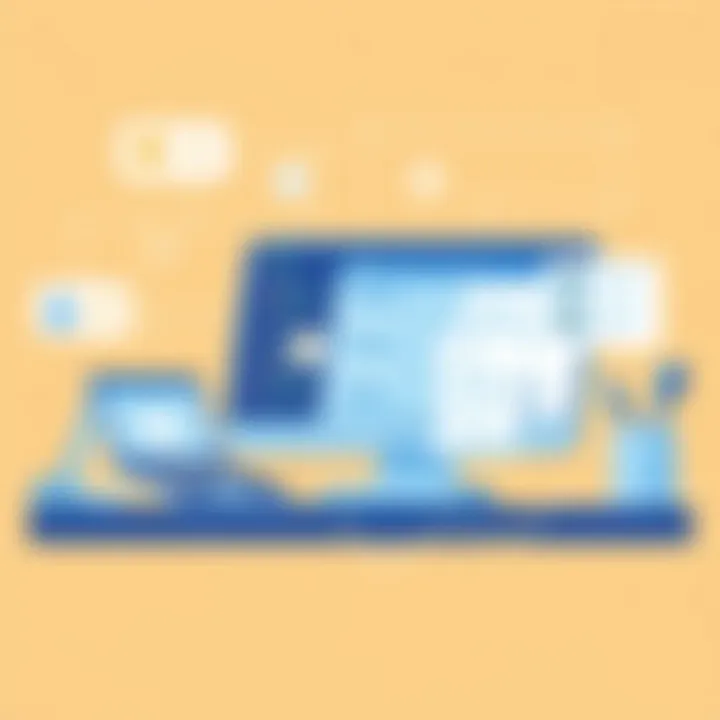
- What critical functions does the current fax system serve?
- Which processes could be streamlined with the new solution?
- Can existing data be easily migrated?
This groundwork plays a pivotal role in identifying the most suitable alternative, ensuring that the new system can seamlessly fit into the existing framework.
Regulatory Compliance and Data Security
With increasing scrutiny around data privacy and compliance regulations, the importance of regulatory compliance and data security can't be overstated. Businesses must navigate a maze of legal requirements, such as the Health Insurance Portability and Accountability Act (HIPAA) for healthcare organizations or the General Data Protection Regulation (GDPR) in Europe.
When assessing alternatives to eFax, companies need to scrutinize the security features offered by these systems. Reliable solutions should provide robust encryption, secure user authentication, and comprehensive access controls to protect sensitive information. Furthermore, it is essential to evaluate whether the new platform undergoes regular security assessments and updates to stay ahead of emerging threats.
“Navigating the landscape of compliance is essential for safeguarding not just sensitive data but also your organization's reputation.”
Ensuring that the chosen software adheres to relevant regulations is non-negotiable. Legal missteps can result in not only financial penalties but also long-lasting damage to a company's credibility and trustworthiness. Conduct a risk assessment that reviews how well potential solutions align with applicable regulations. This diligence ensures that your organization is not just switching to a new fax solution, but doing so with a compliant and secure framework.
By understanding these challenges and considerations, organizations can make informed decisions regarding their transition from eFax to more advanced and secure document transmission platforms. Ultimately, the goal is not only to replace a tool but to enhance overall business processes while navigating the intricacies of technology, compliance, and user acceptance.
How to Choose the Right Alternative for Your Needs
Selecting the right alternative to eFax is no small potatoes. With a myriad of options out there, companies must approach the decision-making process with both clarity and intention. Understanding your organization’s unique requirements is just step one. A well-thought-out selection can drastically enhance communication efficiency while aligning with your long-term goals. Here, we’ll break down key elements that influence choice, and provide insightful strategies to get the best fit for your situation.
Identifying Unique Business Needs
When it comes to choosing a fax alternative, understanding the specific needs of your business is paramount. Take the time to outline what your operation truly requires. Here are a few considerations:
- Volume of Document Transmission: How many documents will you send and receive per day? Higher volumes may dictate the need for solutions that handle batch processing or automated workflows.
- Document Types: Are you primarily sending contracts, medical records, or personal information? Some alternatives boast specialized features suited for particular industries, ensuring compliance and security.
- User Accessibility: Think about who in your organization will use these tools. A platform that’s user-friendly for all, from the IT specialists to the administrative staff, will enhance productivity.
- Budget Restrictions: Financial resources can be a limiting factor. Analyze both initial costs and long-term expenses, including subscriptions, storage, and necessary upgrades.
Gather input from various departments to ensure all perspectives are considered. This approach minimizes friction down the road, as everyone will understand and support the decision made.
Trial and Evaluation Strategies
Once you’ve outlined your business needs, it’s critical to evaluate potential solutions. A trial period is invaluable—it allows you to dive into the platform's functionalities firsthand. Here are some strategies to enhance your evaluation process:
- Free Trials and Demos: Most providers offer free trials. Use this opportunity to assess usability, features, and overall fit for your needs.
- Integration Tests: Ensure the new system plays nice with existing software. A trial allows you to test how well the solution integrates with tools already in use, whether that’s an accounting package or a cloud storage service.
- Feedback Loop: Involve team members who will be using the software to collect feedback during the trial. Their insights will be crucial in identifying pain points or smooth spots.
- Performance Metrics: Define what success looks like during the trial period. Is it reduced document delivery time or improved accuracy? Setting specific goals will help you assess whether the alternative truly meets the needs of your business.
Ultimately, by investing time in understanding unique needs and strategically evaluating alternatives, businesses can implement a solution that enhances productivity and ensures seamless communication. The end goal? A smoother operation that replaces outdated fax methods with a solution that speaks to your modern-day needs.
"By understanding your unique business needs and employing comprehensive evaluation strategies, you lay the groundwork for a successful transition from eFax to a more efficient alternative."
For further detailed insights, consider reviewing resources from the National Institute of Standards and Technology (https://www.nist.gov), or consult relevant discussions on forums like Reddit (https://www.reddit.com/r/technology).
Epilogues and Recommendations
The landscape of document transmission has shifted significantly, marking the decline of traditional fax methods. Within this context, it becomes pertinent to summarize the insights we've acquired about alternatives to eFax. The primary goal here isn’t just to highlight the options available but to offer insights that can steer businesses in their decisions regarding document transmission methods.
When evaluating the alternatives, organizations must recognize their unique requirements. Features like security, integration capabilities, and user-friendliness should be front and center during this decision-making process. Finding a solution that aligns well with organizational goals is paramount; no one wants to be caught with a solution that’s exquisite in theory but falls flat in practice.
Moreover, an organization’s culture and technological landscape play a critical role. A small business might benefit from a user-friendly platform like DocuSign, while a large corporation may need robust enterprise solutions like Microsoft 365, which can manage extensive document requirements along with other business applications.
Here's a look at the essential elements to consider in choosing a suitable alternative:
- Security Features: Prioritizing the protection of sensitive documents should always be a top concern. Solutions with end-to-end encryption, two-factor authentication, and comprehensive audit trails are typically favorable choices.
- Integrative Ability: If a solution can seamlessly mesh with existing systems such as CRM platforms or cloud storage, it simplifies overall operations. This not only cuts down on time wasted in manual processes but enhances workflow efficiency.
- User Experience: A friendly interface can make or break user adoption. Any alternative must be intuitive enough that team members aren’t left scratching their heads trying to figure things out.
Importantly, organizations should also keep in mind that the implementation phase may pose challenges, especially for those transitioning from antiquated systems. Rigorous training and clear communication can help mitigate this friction.
Final Thoughts on eFax Alternatives
As businesses continue to navigate the complexities of the digital age, the reliance on outdated methods such as traditional faxing is dwindling. The alternatives available today not only provide enhanced functionalities but often deliver elevated levels of security and user engagement.
It’s vital to consider specific use cases— in healthcare, for instance, HIPAA-compliant solutions are non-negotiable while the financial sector might look for services offering reliable transaction layers. Each sector has its peculiarities, and understanding these nuances can greatly improve outcomes.
The end of traditional fax doesn’t have to mean a drop in efficiency. It offers a new horizon for businesses willing to adapt and invest in modern solutions.
Future Trends in Document Transmission
Looking ahead, several trends are becoming apparent that will continue to shape the way documents are transmitted:
- Artificial Intelligence (AI): Emerging technologies such as machine learning can automate repetitive tasks associated with document management. For instance, AI can classify documents and enhance searchability, saving time and increasing productivity.
- Mobile Document Solutions: As remote work becomes more prevalent, businesses are investing in mobile-friendly solutions. Platforms that allow users to manage documents directly from their smartphones are likely to gain traction.
- Enhanced Collaboration Tools: Tools that facilitate real-time editing and feedback are becoming standard. This allows team members to be more engaged, regardless of where they are located.
- Eco-friendly Approaches: Companies are more aware of their carbon footprints. The shift towards paperless solutions and effective recycling strategies in digital platforms will continue to grow.



